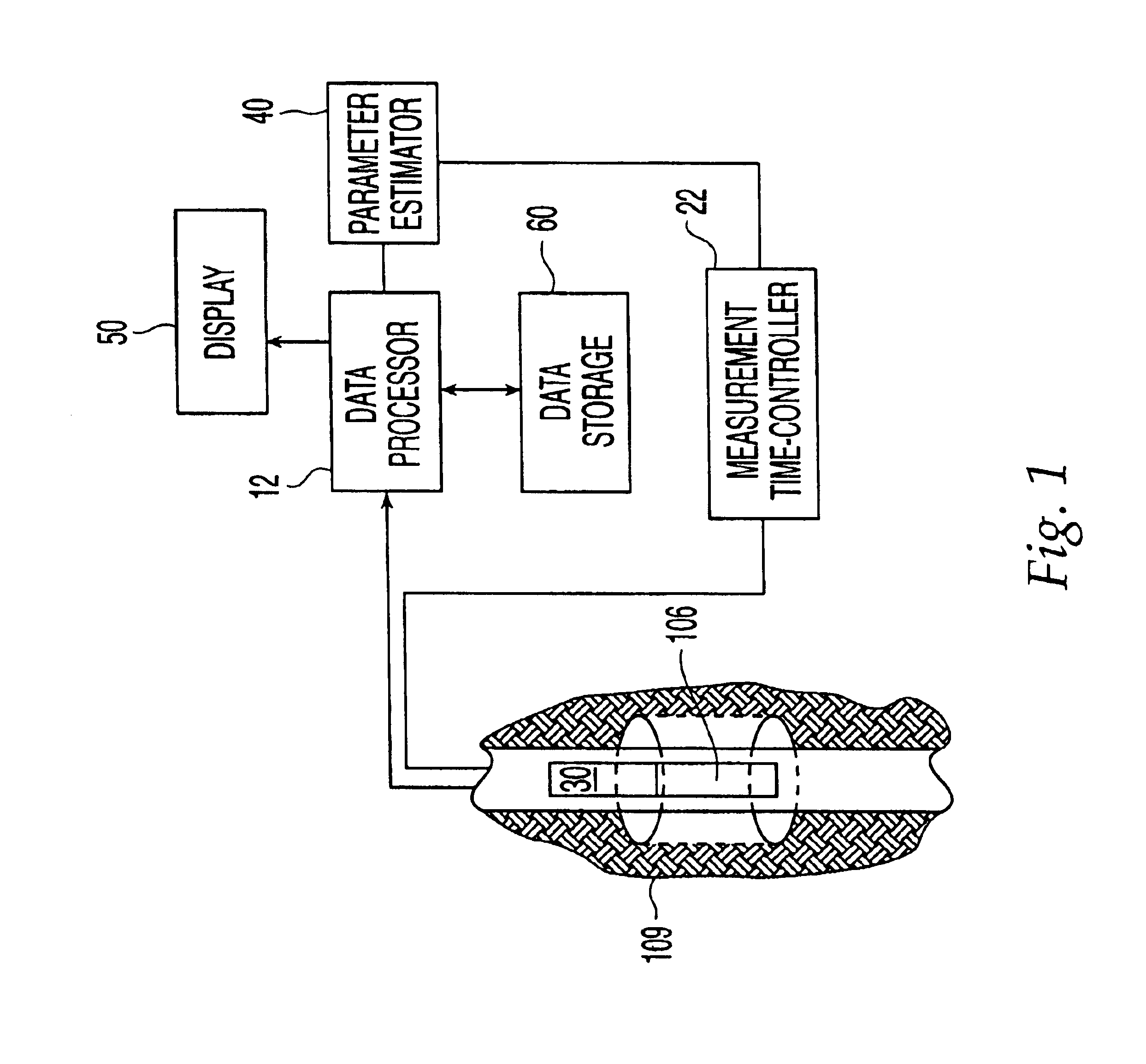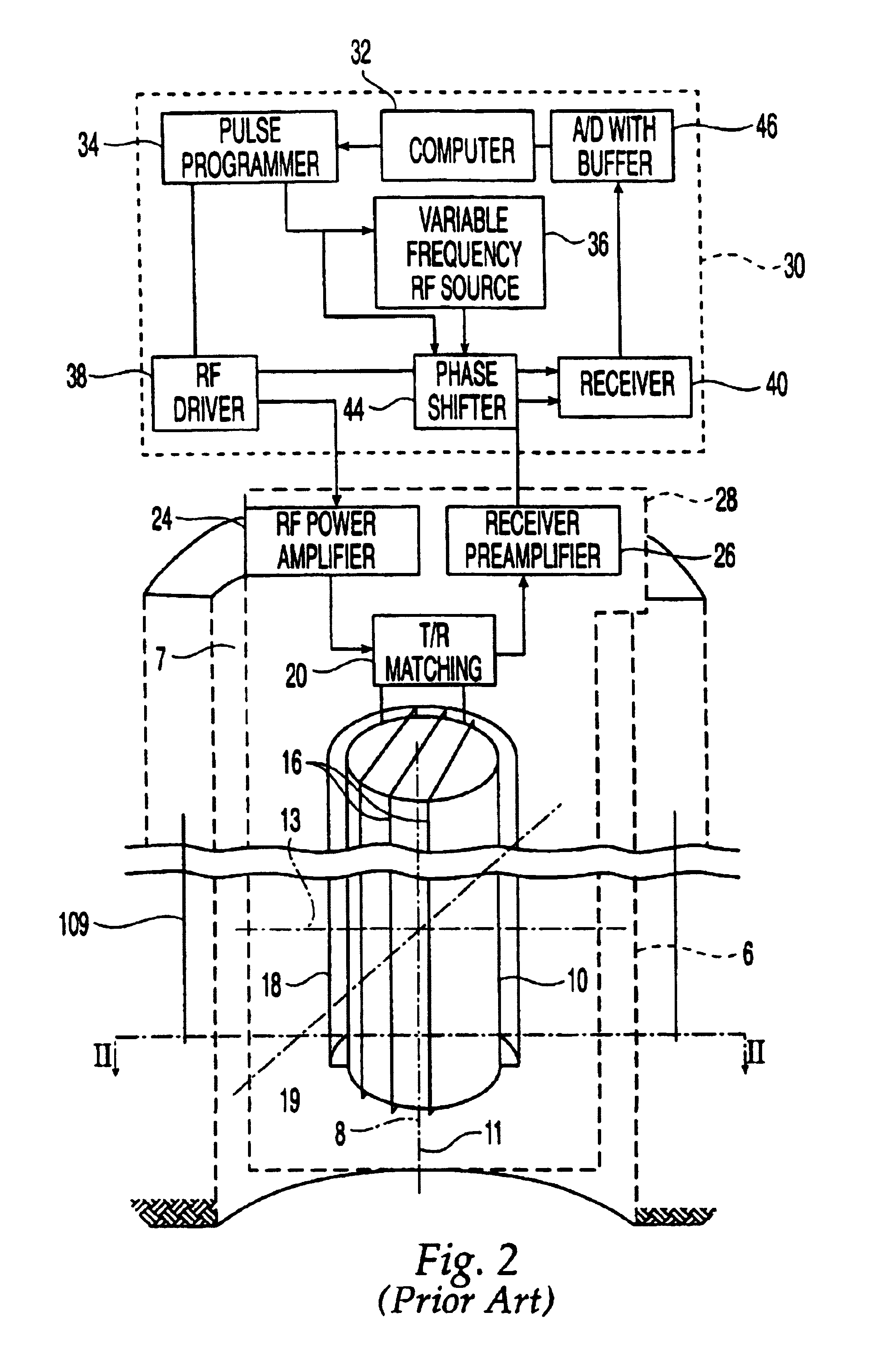Method and apparatus for detecting diffusion sensitive phases with estimation of residual error in NMR logs
a residual error and nmr data technology, applied in the field of nmr logging, can solve the problems of large actual running average used in such cases, significant degradation of vertical resolution, and large noise in the output of boxcar filter, so as to improve the resolution of nmr logging measurements, suppress the effect of noise and artifact reduction
- Summary
- Abstract
- Description
- Claims
- Application Information
AI Technical Summary
Benefits of technology
Problems solved by technology
Method used
Image
Examples
case 1
s. C3HM16
[0277]In the case of a dual-frequency MRIL-C tool, with a non-dithered activation, a Ccomb filter of length 3 is followed by a Hamming filter of length 16. The comparison of BC16 vs. C3HM16 is given in FIG. 14. As shown, the BC16 filter has a notch at k=0.125, and two peaks at k=0.175, and k=0.32, all generating noise in a visible range. The C3HM16 filter on the other hand monotonically decreases, has no significant notches, or secondary visible peaks. There is a significant improvement in the vertical resolution, with almost no side-lobe noise.
case 2
s. C5HM16
[0278]In the case of a dual-frequency MRIL-C tool with dithered activation, a comb filter of length 5 is followed by a Hamming filter of length 16. The comparison of BC16 vs. C5HM16 is given in FIG. 15. The C5 HM16 filter decreases monotonically, as in FIG. 14. Although the boxcar filter may appear to contain a larger proportion of the wavelengths around k=0.18, the notch followed by a peak causes oscillations in the logs. The first notch of the C5HM16 filter occurs at a later spatial-frequency, improving vertical resolution, and the following side-lobe is much smaller compared to the boxcar filter, resulting in significantly reduced side-lobe noise.
case 3
s. C9HM16
[0279]In the case of an MRIL-Prime tool, a comb filter of length 9 is applied before a Hamming filter of length 16. The comparison of BC16 vs. C9HM16 is given in FIG. 16. Both filters have similar responses up to the first notch, explaining why the proposed method may not improve vertical resolution in this particular instance. However, the C9HM16 filter generates a less-noisy response (by approximately 6 dB), since its main side-lobe is weaker compared to the BC16 filter. The second peak of the C9HM16 filter is not as strong as that of the BC16. Although this may imply better resolution on the part of the BC16 filter, the stronger second peak is actually a source of noise that can be observed on the logs. The more suppressed second peak of the C9HM16 response results in a cleaner response.
Filter Response Comparison for Longer Filter Lengths
[0280]Filter responses for BC32 and BC64, vs. C9HM32 and C9HM64, respectively, can be seen in FIGS. 17 and 18. As the RA gets larger, t...
PUM
 Login to View More
Login to View More Abstract
Description
Claims
Application Information
 Login to View More
Login to View More - R&D
- Intellectual Property
- Life Sciences
- Materials
- Tech Scout
- Unparalleled Data Quality
- Higher Quality Content
- 60% Fewer Hallucinations
Browse by: Latest US Patents, China's latest patents, Technical Efficacy Thesaurus, Application Domain, Technology Topic, Popular Technical Reports.
© 2025 PatSnap. All rights reserved.Legal|Privacy policy|Modern Slavery Act Transparency Statement|Sitemap|About US| Contact US: help@patsnap.com



